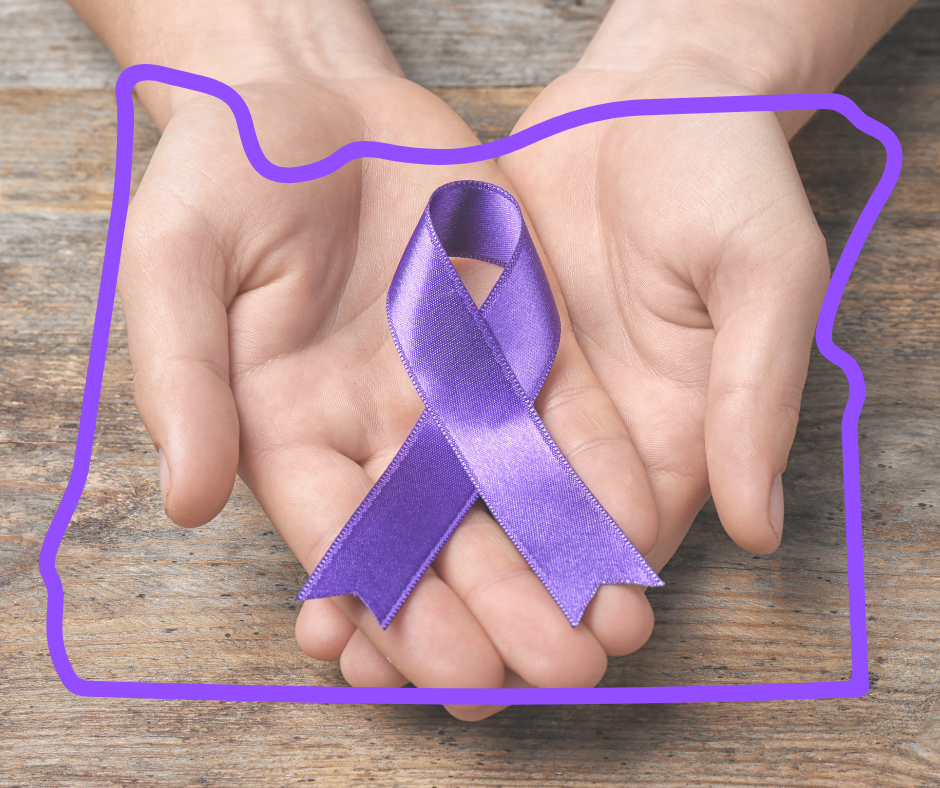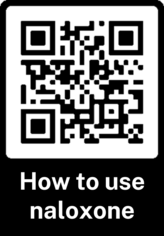|
 |
|
In this issue: |
|
|

Approximately 100 people per month are dying from an opioid overdose in Oregon, and the majority of the deadly drugs contain illegally manufactured fentanyl.
If you use drugs, assume that all illegal substances and any pills not prescribed and handed to you by a pharmacist contain fentanyl—an opioid 50 times more potent than heroin and 100 times stronger than morphine.
Anyone using drugs can overdose, regardless of:
- What drug they are using.
- How they are using.
- How much experience they have using.

Anyone can also witness an overdose, which is why having the opioid overdose reversal medication naloxone nearby is critical. The U.S. Food and Drug Administration recently approved naloxone to be available without a prescription. This means anybody can and should carry naloxone on them or keep it in their business, especially if they use drugs, or hang out with, live with or serve people who use drugs.
If you witness an overdose, call 911 immediately.
Read our blog to learn more about naloxone, how to get it, how to use it, and how it can save lives. You can also use this QR code for a printable guide on using the nasal spray form of naloxone, and/or watch this video.
|
|
|
|
Shelves of empty copper urns that once held cremated remains are now part of the cremains memorial at Oregon State Hospital.
This year, 76 families have been reunited with their ancestors’ cremated remains, called “cremains,” that have been interred at Oregon State Hospital (OSH) for decades.
Some of those families recently traveled from across the country and Canada for the hospital’s annual cremains memorial ceremony to honor their ancestors and claim their ashes.
Between 1914 and 1973, OSH operated a crematorium and became the custodian of the unclaimed cremains of nearly 3,500 people who died while living or working at OSH and other state institutions. For the past 10 years, OSH staff and volunteers have searched for living relatives and reunited them with 1,052 previously unclaimed ancestral cremains.
People can visit OSH's online cremains directory to research whether they have a family member among the unclaimed cremains. To learn more about the cremains memorial, which is free and open to the public on the hospital’s Salem campus, visit their
A story about OSH's efforts to reconnect families is featured in the current issue of Recovery Times, the hospital's quarterly newsletter. You can subscribe to Recovery Times here.
|
|
|
Early detection saves lives! This October, during Breast Cancer Awareness Month, we urge people to get screened for breast cancer.
For individuals who are uninsured or underinsured, breast cancer screening in Oregon is free through the Oregon ScreenWise Program.
To enroll in ScreenWise, a patient must meet all of these requirements:
- Age 50 or older and needing breast or cervical cancer screening or diagnostic services; or age 21-49 and needing only breast or cervical cancer diagnostic services;
- Living or intending to live in Oregon;
- Household income at or below 250% of Federal Poverty Level;
- Uninsured or underinsured.
To learn more about ScreenWise and how to enroll, visit OHA’s website, or call (877) 255-7070.
|
|
 |
|
Health notes |
|
|
|
Oregon's Respiratory Virus Data dashboard has been updated for the 2023-2024 respiratory virus season to help connect people with the latest COVID-19, influenza and respiratory syncytial virus (RSV) trends in Oregon.
Of note, OHA’s wastewater monitoring data dashboard, which used to display only COVID-19 data, now includes data for flu and RSV activity. This dashboard displays a map of Oregon with locations of participating wastewater treatment facilities, virus concentrations and trends in virus levels—ranging from “sustained decrease” to “sustained increase”—at those sites. It is updated every Wednesday.
The interactive resource includes trends in test percent positivity, wastewater monitoring and outbreaks reported for each virus.
OHA continues to report on COVID-19 hospital bed capacity, SARS-CoV-2 variant lineages and COVID-19-related deaths. To subscribe to the weekly influenza and RSV reports, please visit FluBites and RSV-Oregon.
For more on these respiratory viruses read The flu, COVID-19 and RSV: What you need to know.
To stay informed about health care-associated infections (HAIs) in Oregon, check out OHA’s new newsletter, The HAI Chronicle. The quarterly publication contains news and information about HAIs, infection prevention and safe and effective antibiotic use. The newsletter’s second issue was published this week.
Whether you're a seasoned professional or just curious about patient safety, the HAI Chronicle is a one-stop source for valuable insight and knowledge. Issues features reader-submitted questions, details on upcoming events and the latest trends in health care, plus a sprinkling of health care humor.
Additionally, OHA’s Hospital Healthcare-Associated Infections Data Dashboard tracks infections acquired while receiving medical care at 61 hospitals across Oregon. The data show a significant increase in health care-associated infections (HAIs) in Oregon during 2021, which aligns with national trends, suggesting the COVID-19 pandemic slowed implementation of standard infection prevention and control practices. The HAI dashboard is updated annually, and you can read more about it here.
|
|
 |
|
OHA answers your questions |
|
|
|
Questions are answered by OHA experts and sometimes with help from other state agencies or community partners.
Q: What is going on with the new COVID shot? Where and when can we get them? – Gabriele, Bend
A: The rollout of the 2023-2024 COVID-19 vaccine has been frustrating for many, including OHA. Shipping and manufacturing delays have been widespread, in Oregon and across the country. We urge you and all Oregonians to be patient and not give up.
In Bend, where you are, the Deschutes County Public Health Services website states “COVID-19 vaccines are NOT yet widely available in our community,” and we are seeing similar messages for other counties.
Using the Vaccines.gov search tool, I’m seeing a handful of pharmacies in Bend that have 2023-2024 mRNA COVID-19 vaccines in stock for people ages 12 and older, including Walgreens, Fred Meyer, Rite-Aid and Safeway. (The availability of COVID-19 vaccines for children under 12 is a real problem.)
The newly authorized 2023-2024 Novavax vaccine is starting to show up at some pharmacies, including the Costco at 2500 NE Hwy 20 in Bend. It is a fine alternative to the mRNA vaccines, because it is also updated with the Omicron XBB.1.5 spike protein.
In the meantime, we recommend getting other vaccines that you might need, such as flu and RSV, while we wait for the COVID-19 vaccine supply to build up.
Q: In the absence of COVID-19 testing data, I have been tracking the wastewater data on the OHA website. The last published wastewater data for Bend looks to be September 5, 2023. Has the Oregon wastewater testing program been suspended? Thank you. -- Nancy, Bend
A: Earlier this month, some of OHA’s data dashboards got a makeover, including the COVID-19 wastewater data dashboard. Now, the dashboard also offers data for flu and respiratory syncytial virus (RSV). Looking at COVID-19 trends, the latest reporting from Bend (from samples taken Oct. 10) show no change, or “a plateau,” in SARS-CoV-2 viral concentration. The previous sample date from Bend was Oct. 3, which showed a “sustained decrease” from earlier samples. This data is updated every Wednesday.
We apologize for any confusion. Rest assured the wastewater monitoring program at Oregon State University is going strong, and there are no plans to end it.
If you have a question related to COVID-19 or other public health topics, submit your question here. While we are unable to answer every question, we try to address questions that may be of interest to a broader audience. Please understand we are unable to provide specific medical advice for personal medical conditions.
|
|

If you need mental health support for any reason, help is out there.
|
|
|
|
|
|